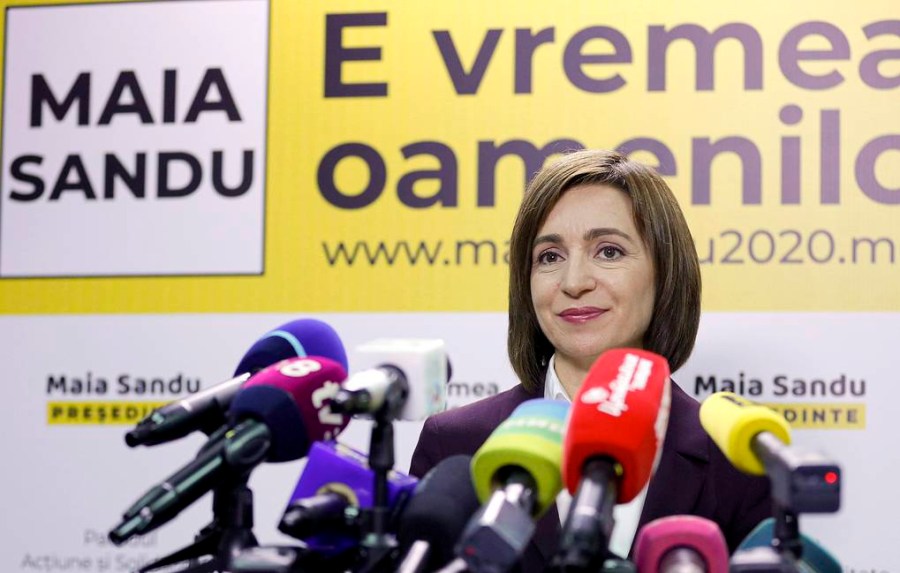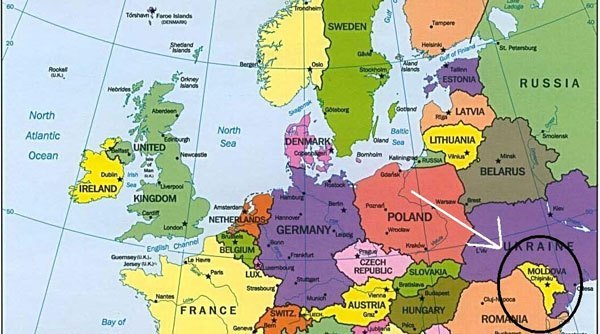Decisions Loom For Moldova In Turning East Or West
Op/Ed by Chris Devonshire-Ellis

- New President is Pro-European Union
- Moldova is a Belt & Road member and an observer to the EAEU
- Trade connections and history are to the East, while younger people want the trappings of the West
- President will see who can deliver much needed trade and investment
The Eastern European country of Moldova has just gone to the polls to elect a new President, with the pro-European candidate, Maia Sandu winning 57.7% of the vote. This now places Moldova in a decision-making process, to turn to the East, and toward Russia and China, or to the West, and to the European Union.
Previously part of the Soviet Union, Moldova is sandwiched between Ukraine and Romania, and is one of the lesser known regions of Eastern Europe. Landlocked, an agreement reached with Ukraine in 2005 gave Moldova access to the Black Sea via a 600 km stretch of the Danube. It can be expected that this may now be further expanded in terms of facilities. The Giurgiulesti Port has seen a huge increase in traffic over the past three years, and is also operated as a Free Trade Zone, meaning goods destined for the EU can be imported and warehoused – duty free – until called upon for shipment into the EU.

However, in recent times Moldova has looked to the East. It is a signatory to China’s Belt & Road Initiative, and was granted Observer Status to the Eurasian Economic Union in 2018. It has been a member of the Commonwealth of Independent States (CIS) since 1991.
Moldova has a trade imbalance of about US$3.6 billion – a lot for a small country, and it is reliant on imports, in petroleum, natural gas, textile yarn, pharmaceutical products, electrical machinery and road vehicles. Moldova’s main import partners are Romania, the Ukraine, Russia, Germany, Italy, China, Turkey and Poland.
However, as a result of an expansion of the textile industry over the past two years, exports of clothing are gaining importance and already account for the biggest share of exports. Moldova’s other exports include vegetables and fruit, beverages, electrical machinery, oil seeds and cereals. Moldova’s main export partners are Russia, Romania, Italy, the Ukraine, the United Kingdom, Belarus and Germany.
Foreign Investment has been increasing into the country, mainly from the EU, and mainly to exploit its labor force, one of the lowest costs bases in the region. The Moldovan population is about 3 million with a total GDP of US$20 billion. Per capita income is about US$5,657. (Both figures in PPP). Interestingly, Moldova’s economy is dominated by the services industry, which makes up 60 percent of its economy. Even if the country has some of Europe’s lowest per capita GDP, in future it could become a hub for e-commerce and IT.
The choices are tough to make. In 1918, Moldova voted to become part of Romania, a decision that was overturned by the Soviet Government. Moves towards the EU and the potential for rejoining Romania would be sure to cause political and social problems, and it is unclear how Moscow would react to NATO forces being present in the country. That exact issue is in part to do with the existing problems over Ukraine. The younger generation of Moldovan’s – Europe’s poorest – will have seen neighboring Romanians have access to cool belongings – and in wealth terms are at 20th in Europe as opposed to Romania’s mid-table ranking of 20. They want greater access to EU materialism.
However, the trade structures are all to the East, where progress is coming but will be slow. To this end the Moldovan access to the Black Sea is important – it needs to boost exports to create local wealth but not at the cost of purely being a cheap labor force.
Maia Sandu meanwhile is an experienced Politician with a 6 month stint as Prime Minister in 2019 before being ousted in a vote of no confidence. Prior to this she was Minister of Education, being a Member of the Moldovan Parliament since 2014. With her well-known views of taking Moldova into the EU, the country is at a clear crossroads. It is also highly unlikely the EU itself will be able, or even want to take on yet another ex-Soviet nation under its wing. It faced criticism for allegedly backing away from the Balkans nations after promises to join had apparently been made. The EU had discussed membership and the potential for the enlargement of the EU with Albania, Bosnia and Herzegovina, Serbia, Montenegro, Macedonia and Kosovo for well over a decade, before deciding that ‘Connectivity rather than Membership‘ was what they actually meant. Serbia subsequently signed a Free Trade Agreement with the Eurasian Economic Union as a result. Russia is now providing loan finance for the High-Speed Serbia-Montenegro Rail Link. China is building the same route but by highway from Belgrade to Bars.
Sandu therefore will be having some interesting conversations in the coming months, as she too, determines the question of East versus West. A good start would be seeing who can be persuaded to enlarge the Danube-Black Sea Canal and invest further in the main Giurgiulesti Port. She will then have to determine, as the well known, yet vulgar saying nearly goes “Construction development talks, and Bullshit walks.” She takes office from December 23 and will be Moldova’s first female President.
Related Reading
- Minimum Wages, Available Workforce & Individual Income Taxes For All Countries and Territories In China’s Belt & Road Initiative
- China’s Belt And Road Initiative Member Countries: Exports Up 28% In Three Years
About Us
Silk Road Briefing is written by Dezan Shira & Associates. The firm has 28 offices throughout Asia, and assists foreign investors into the region. For strategic advisory and business intelligence issues please contact the firm at silkroad@dezshira.com or visit www.dezshira.com





